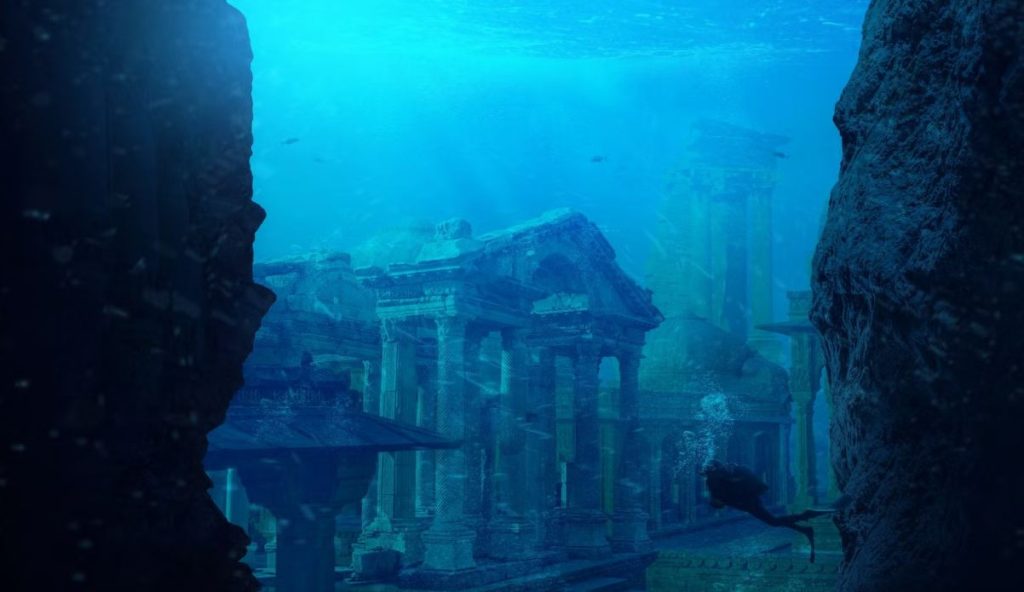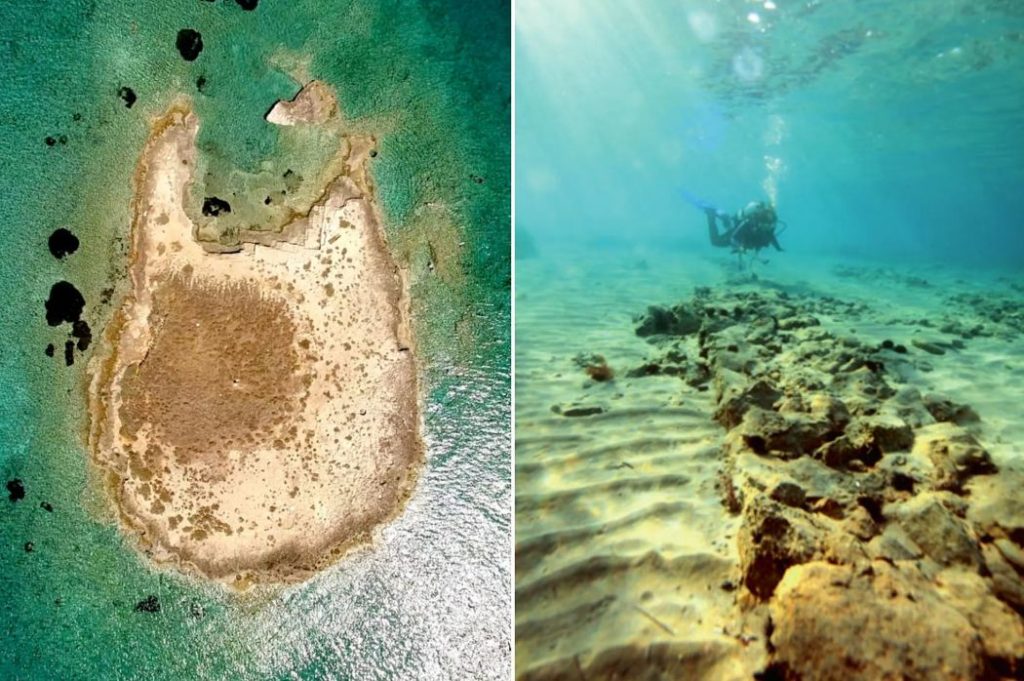Archaeologists have uncovered a remarkable submerged city beneath Lake Issyk-Kul in Kyrgyzstan, sparking comparisons to the mythical Atlantis. The discovery comes from the Toru-Aygyr complex, located near the lake’s northwest shore. Researchers from the Russian Academy of Sciences conducted a detailed underwater survey, exploring four zones at shallow depths ranging from around 1 to 4 meters.
Evidence of a Thriving Medieval Hub
In the first zone, the team found structures made of fired bricks, including the remains of stone buildings and wooden beams.
Notably, they discovered a millstone, suggesting that the settlement once had a mill for grinding grain — evidence of agriculture and organized industry. Nearby, the archaeologists identified what could have been a public building—possibly a mosque, bathhouse, or a madrassa (an Islamic school). This indicates that the community was not only economically active but also socially and religiously engaged.

A Muslim Necropolis Preserved Underwater
One of the most striking finds was a 13th–14th century Muslim necropolis, uncovered in the second surveyed zone.
The necropolis covers a large area—approximately 300 by 200 meters—and contains graves oriented in a traditional Islamic manner. Specifically, the skeletons were aligned facing north, with their faces turned toward the qibla, the direction Muslims face during prayer.
Anthropologists are now studying the remains in detail to learn more about the lives and origins of the buried individuals.
Sudden Disaster and Abandonment
Researchers believe that the city met its fate in the early 15th century, following a terrible earthquake. Remarkably, archaeologists think that many of the inhabitants had already left the site before the disaster struck, potentially explaining why the city collapsed without a major loss of life.
After the quake, the region’s population reportedly shifted dramatically: the flourishing medieval urban community disappeared, replaced by nomadic groups closer to the lake’s shore.
A Strategic Stop on the Silk Road
The submerged settlement at Toru-Aygyr was not an isolated village — it appears to have been a major trading hub along the historic Silk Road.
Goods, ideas, and people would have passed through this city, connecting the East (China).
This strategic position likely contributed to its prosperity and cosmopolitan character.
Scientific Analysis and Future Research
The artifacts recovered from the site — including ceramic vessels, bricks, and wooden fragments — are being sent to labs for accelerator mass spectrometry (AMS) dating and dendrochronological analysis. These tests will help determine precisely when the city thrived and when it was submerged.
Significance of the Find
Although the legendary Atlantis is usually thought of as a purely mythological place, this discovery offers a real-life parallel: a once-advanced city, lost to natural disaster, and preserved underwater. The site could reshape our understanding of Central Asia’s medieval history and its role in long-distance trade.

Conclusion
The submerged city beneath Lake Issyk-Kul stands as a rare gateway into a forgotten chapter of Central Asian history. Its buildings, artifacts, and necropolis reveal a community that was culturally sophisticated, economically active, and deeply connected to the world through Silk Road trade. The sudden disappearance of this settlement, likely triggered by a powerful earthquake, adds an element of mystery that continues to captivate archaeologists. As scientific analyses progress and new discoveries emerge, the site promises to expand our understanding of medieval life in the region and demonstrate how natural forces can reshape human civilizations.

















